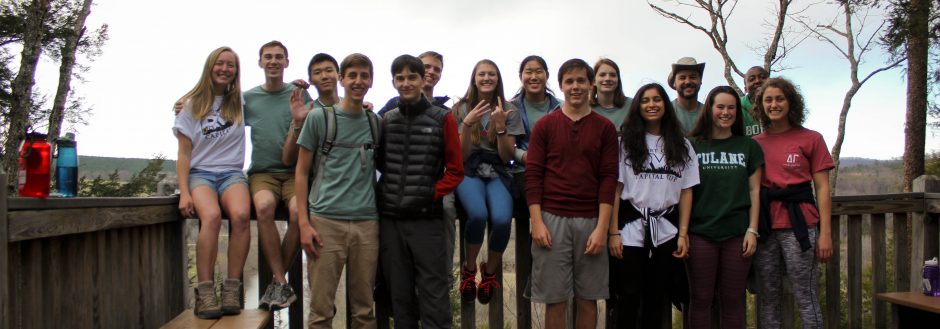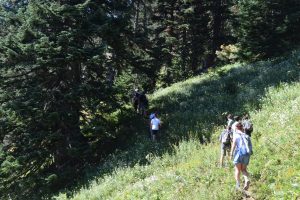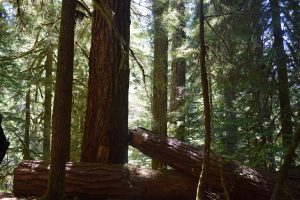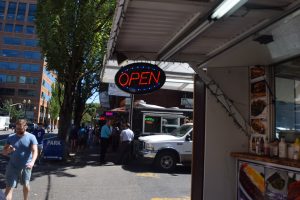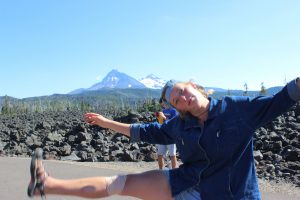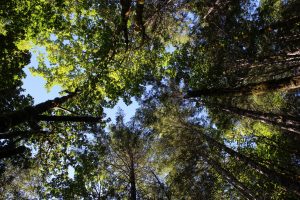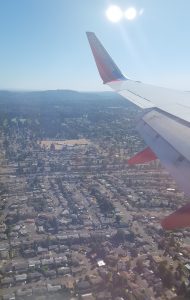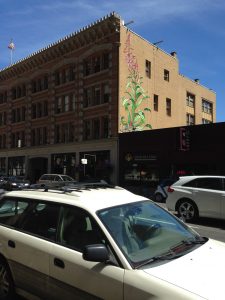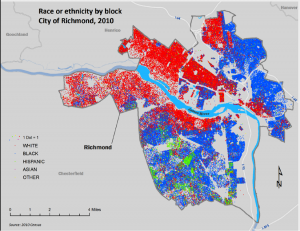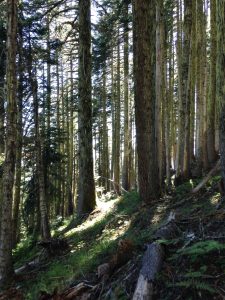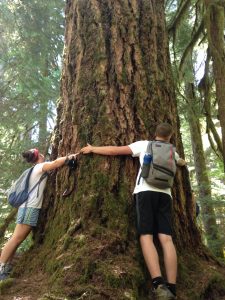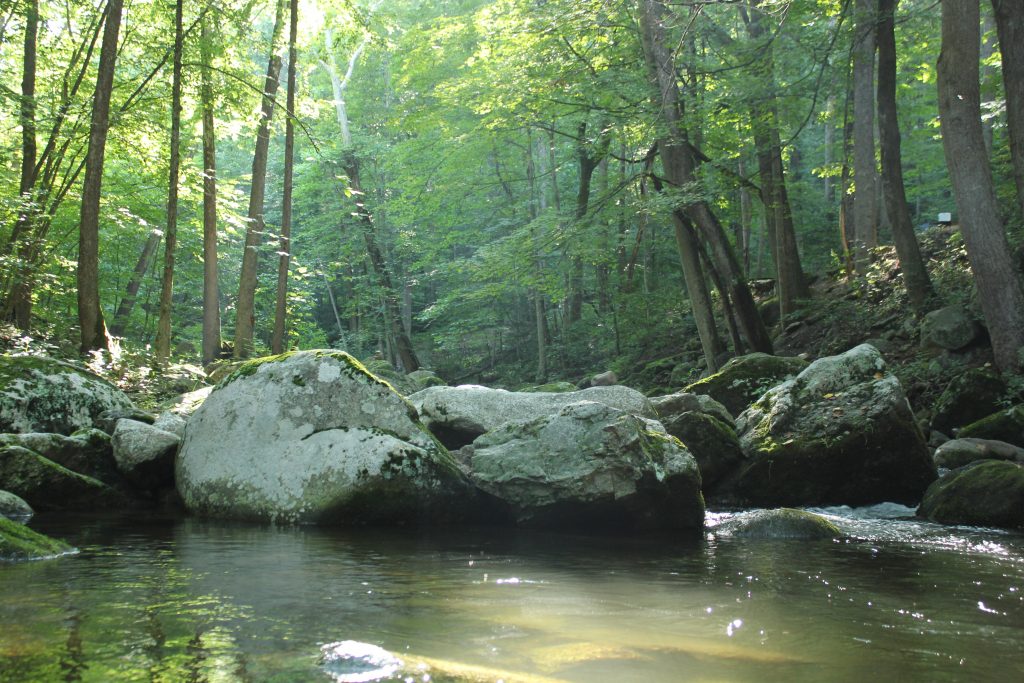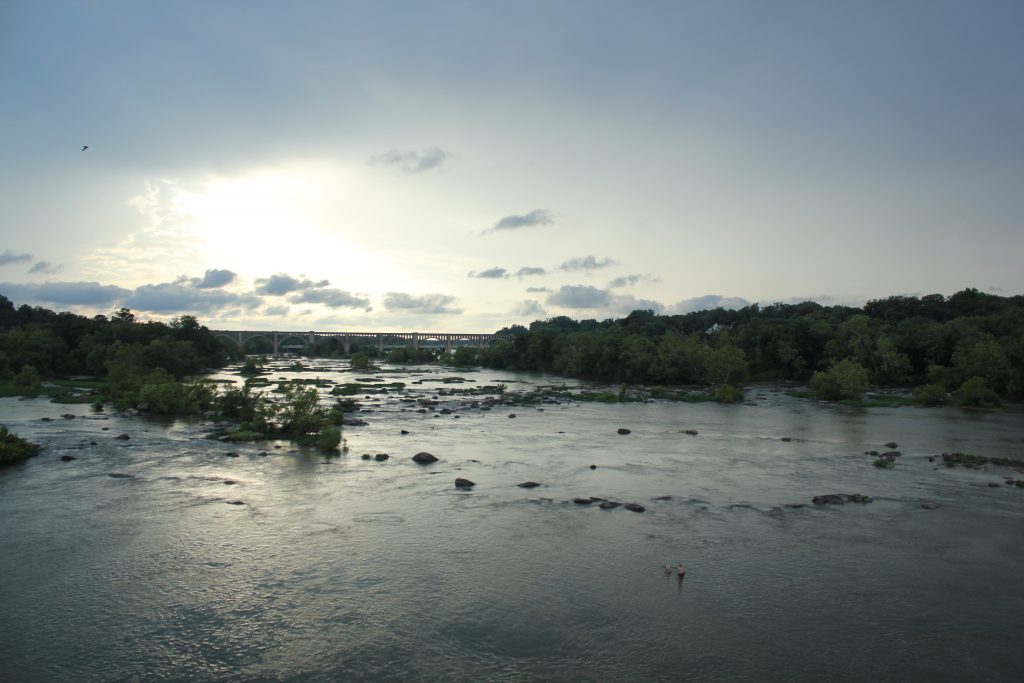HJA #1
There are numerous things I am excited to observe when we visit the H.J. Andrews Experimental Forest. To start off, I am just eager to be in an environment so different from the one I’ve grown up in—in the Forest and within Oregon in general. I expect to see many different types of trees and plants, such as the conifers, and various types of land and bodies of water. I am also looking forward to seeing the wildlife native to the forest and the overall ecosystem. Finally, I hope to see how all parts of the forest work together to become a single, successful, functioning place.
The stories of these forests can be told through multiple different mediums, from storytelling and poetry using imagination to observations and experiments using direct experience and research. However, all of these avenues of expressing thoughts fall on a scale from the sciences to the humanities—two different types of insight that actually complement each other. Creative writing allows its readers to derive their own depiction of what they see from their imagination. It can also open a reader’s mind to new ideas and inventive solutions through the use of similes, metaphors, and other literary techniques. However, by combining it with the conceptual insights of science, creative writers can adeptly express the complex emotional and cultural relationships that humans have with the natural world. Meanwhile, science can then successfully make an impact on a person’s life and ultimately become a part of it. Essentially, these two thought processes build off each other; only when someone feels a deep connection to an issue, that issue will be acted upon. Overall, both scientists and writers together teach us of the many ways we approach, experience and understand the forest and its relationship with people.
The long-view is essential to understanding the role of humans in the natural world because ecological processes tend to be long-term. Therefore, we can only really understand the forest ecosystem if we look at it over time, and along with this, the understanding of our role in the natural world will deepen. Additionally, although there will never be permanent solution to any problem in the world—as society as a whole and its interaction with the environment is constantly changing—studying it over a long period of time is a great place to start learning and building from. Also, by tracking something over time, techniques tend to become sharper and more efficient. Conclusions are more skeptically analyzed and understood as we build a connection and delve deeper and deeper into the topic being studied. Through this process, over time, our understanding of our place in the natural world unfolds.
HJA #2
The theme Research and Revelation was chosen as the first section of the book because it provides the reader with a background and the overall facts of the Forest. It also allows the reader to accurately picture the Forest through its extremely detailed imagery. For instance, the first ground work essay describes the location of Andrews Forest relative to the landmarks surrounding it. It also describes how the Forest was made, the influence of weather on the environment, and the trees and wildlife that can be found within it. The next ground work essay focuses on the “ancient forest” and its relationship with people and research, while the final ground work essay mentions the role of decomposition in forest growth. Together, in conjunction with the other entries in this section, the reader can get a basic understanding of how Andrews Forest looks and how its different parts work together to make it a thriving ecosystem.
Based on the passages in this section, I expect to see a blanket of conifer trees above me everywhere I go filled with different types of squirrels, bats, and birds. Additionally, there will be streams filled with rocks and logs filled with insects, fungi and moss. Furthermore, the woods will be very dense with plants and branches, but there will also be open meadows all over. The ground will be soft and spongy. However, I also think the Forest will contain numerous areas that are visibly marked and outlined for research. Nevertheless, the forest will be picturesque, green, and alive.
In the poem “The Web,” by Alison Hawthorne Deming, she focuses on the age of the forest and the parts within it multiple times in a creative way, and goes on to question the beauty of a place that has survived over so much time and so many challenges. For instance, Deming references the trees that were able to survive the fires 500 years ago, which was mentioned in the first ground work essay. She also talks about the floods that occur when warm rain falls on fresh snow by calling it “snowmelt” and goes on the describe its effect on the forest in a beautiful way. Finally, she uses a lot of wordplay in the poem. For instance, she uses the word “erupt” to describe the sounds of the Forest, which references the several volcanic eruptions millions of years ago, which created its underlying bedrock. In addition, the word “dense” was used to describe the Forests’ intelligence, while it is also a word that can be used to describe the Forest environment. Deming uses creativity to express something serious in a beautiful way.
I would like to know if the are a lot of microecosystems within the Forest. I recently went on a hike in Shenandoah where there was a small microecosystem that was actually slowly dying out due to the temperature of the area slightly increasing each year. Is this a problem faced in Andrews Forest as well?
HJA #3
Change and Continuity was chosen as the theme of the second section because it is important to understand the disturbances, or changes, in an environment, and their effects on the future of that environment. Only then can people figure out ways to continue managing and studying that environment. In terms of Andrews Forest, wildfires, landslides, and floods have all changed the environment of the Forest. This, in turn, has disrupted its ecosystem and caused plants and animals to have to adapt to a new surroundings. While it has caused some organisms to die out, it has also created a space suitable for other species. Scientists to use the data gathered on these disturbances to prepare for future ones. Although disturbances may be rare, being successfully prepared for them can have beneficial effects for decades after.
Based on this section, I believe I will see a mix of old and new trees—old trees surviving the numerous fires, floods, and landslides, and new trees created after these natural disasters took place. I also think there will be a greater variety of new trees than old trees, as weaker trees would have fallen to the chaos will the stronger trees would have been the only ones to survive. This phenomenon will be mirrored in other organisms as well, such as smaller plants and fungi. I will also be able to see different grounds created by these disturbances and notice the firmness of certain features of the land, such as rocks, in contrast to the newness of the land it is embedded in.
One of the major topics of this section was destruction and regeneration, which Jeff Fearnside focuses on in his poem “New Channel.” He gives the readers a closer look at the February 1996 flood, but instead of just saying what happened, he used imagery and similes to describe what we may have seen had we been there. He even questions the wildlife that died. The way he described it—“How many fish died—the torrent sculpin and longnose dace—their eggs—water skippers…Choked bludgeoned, buried?”—just pulls the reader in even more. It sounds so emotional, as if Fearnside is those animals, which helps us connect to the burden the loss of habitat through the flood brought to the wildlife in the Forest even more. He continues to mention that disturbances should not always be viewed as bad—a point made in the ground work essays—and goes on to say we should realize there is regeneration because of it. This is what we should focus on and build from.
I was very interested in the topic of clear-cutting mentioned in this section. How would the environment of Andrews Forest differ from how it is today if clear-cutting was not practiced? Was that something that was necessary or if it did not happen would the environment be thriving even more? I wonder if it affected how diverse the environment was in terms of trees and wildlife.
HJA #4
Borrowing Others’ Eyes was chosen as the theme of the third part of the book because it is important to look at and analyze things from multiple different perspectives. One may see or understand something by him or herself, but by collecting the thought and opinions of multiple people, more can be seen or understood. Others point out things we make not think of ourselves. In terms of the Forest, everyone will experience it differently, as everyone is unique. Therefore, one may notice the difference in tree color in one area while another may focus on the sound of the water current. However, all of these thoughts, when shared and combined, can create a more rounded experience of the forest. Additionally, by bouncing off ideas and observations, someone may notice something someone pointed out previously in a different place. This is why it is important to share what we observe—it lets others detect what they may not have been able to before. In another sense, to discover long-term changes in the forest, scientists can use other techniques, such as soundscape, to understand the forest in ways we cannot ourselves. Using this technique to examine bird calls allows scientists to better understand migration patterns—something they were unable to do unless they borrowed others’ eyes.
Based on this section, I realize there is not one clear-cut way the Forest landscape will look because everyone will experience something different on his or her visit. Yes, all of us will see the green trees and the streams and meadows of the rainforest, but everyone will focus on different things within those environments. The ground work essays and other entries of this section also made me realize that the “look” of a landscape does not just refer to what can be seen with your eyes—it extends to what can be heard, smelled, or felt. Therefore, I can imagine the squirrels roaming the grounds, the smell of fresh air, the sound of water dripping off the leaves, the denseness of the plants, and the buzz of mosquitos swarming in the air. However, I also know so much will go unnoticed. I will just have to experience the landscape to find out.
Robin Wall Kimmerer’s “Listening to Water” combines the ideas of water and sound—both mentioned in the ground work essays. He touches on all the different bodies of water and events involving water he has witnessed in the Forest and describes them using sound and imagery. For instance, he talks about the “sshhhh from rain,” “pitpitpit from hemlock,” and “popp of falling alder water,” and the different paces and resonances he hears in a pool of water. He even goes on the describe the hyporheic water flow described in the ground work essay focusing on water, and says he is listening for it. As the reader, the way he writes this section makes me feel as if I am there and listening for it as well. Also, this entry makes me realize the importance of actually listening to other people’s observations, because I do not think I would have perceived all the things he has been able to had I been there myself. Overall, in his piece, he successfully uses sound to convey exactly what he is witnessing within the water. By combining this with what others have observed over time, the story of water in the Forest may be able to be told one day.
As soundscape seems to be a widely used technique in the Forest, do some sounds overlap for multiple species? If so, what is a way to combat this problem? I also wonder; if sounds do overlap for multiple species, do all these species stem from the same ancestors?
